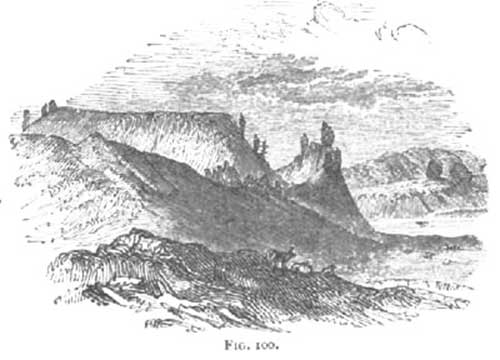Dinnrigh or Dinnree
From A Smaller Social History of Ancient Ireland 1906
« previous page | contents | start of chapter | next page »
CHAPTER XVI....continued
Dinnrigh.—One of the most noted, and probably the oldest, of the Leinster palaces was Dinnrigh [Dinnree: the 'dinn or fortress of kings']. Besides being very often mentioned in the records, it was the scene of a tragedy which is related in detail in the historical story called "The Destruction of Dinnree," contained in the Book of Leinster, which has been edited and translated by Dr. Whitley Stokes. Some two centuries and a half before the Christian era, Cobhthach [Coffa] the Slender murdered the king of Ireland—his own brother—and also the king's son Ailill, and usurped the throne. But Ailill's son, Lavra the Mariner, who fled to the Continent, returned after some years with a party of Gauls, and landed at Wexford, where he was joined by large contingents of the men of Leinster and Munster, who hated the usurper. Marching quickly and silently by night to Dinnree, where the king then happened to be holding court, he surrounded the palace, and, setting fire to the houses while the company were engaged in feasting, he burned all—palace, king, and courtiers—to ashes. The fine old fort still exists in good preservation. It is situated on a high bank over the River Barrow on the west side, half a mile south of Leighlinbridge, and is now commonly known by the name of "Ballyknockan Moat." The moat or mound—figured in the illustration, last page—is 237 feet in diameter at the base; the circular plateau on the top, on which stood the timber houses, is 135 feet in diameter, and 69 over the River Barrow.
FIG. 100. Dinnree in 1845. (From Mrs. Hall's Ireland).

